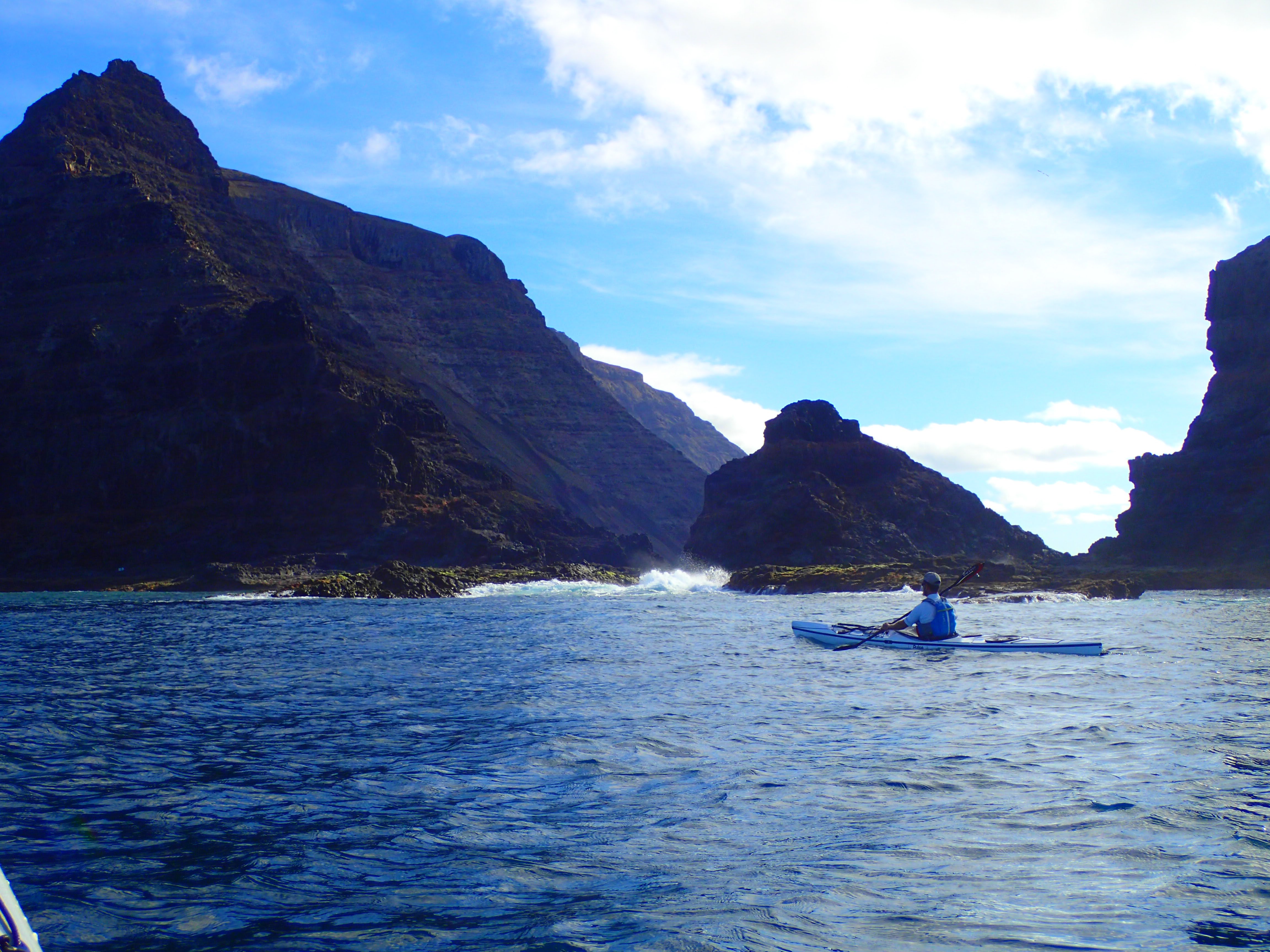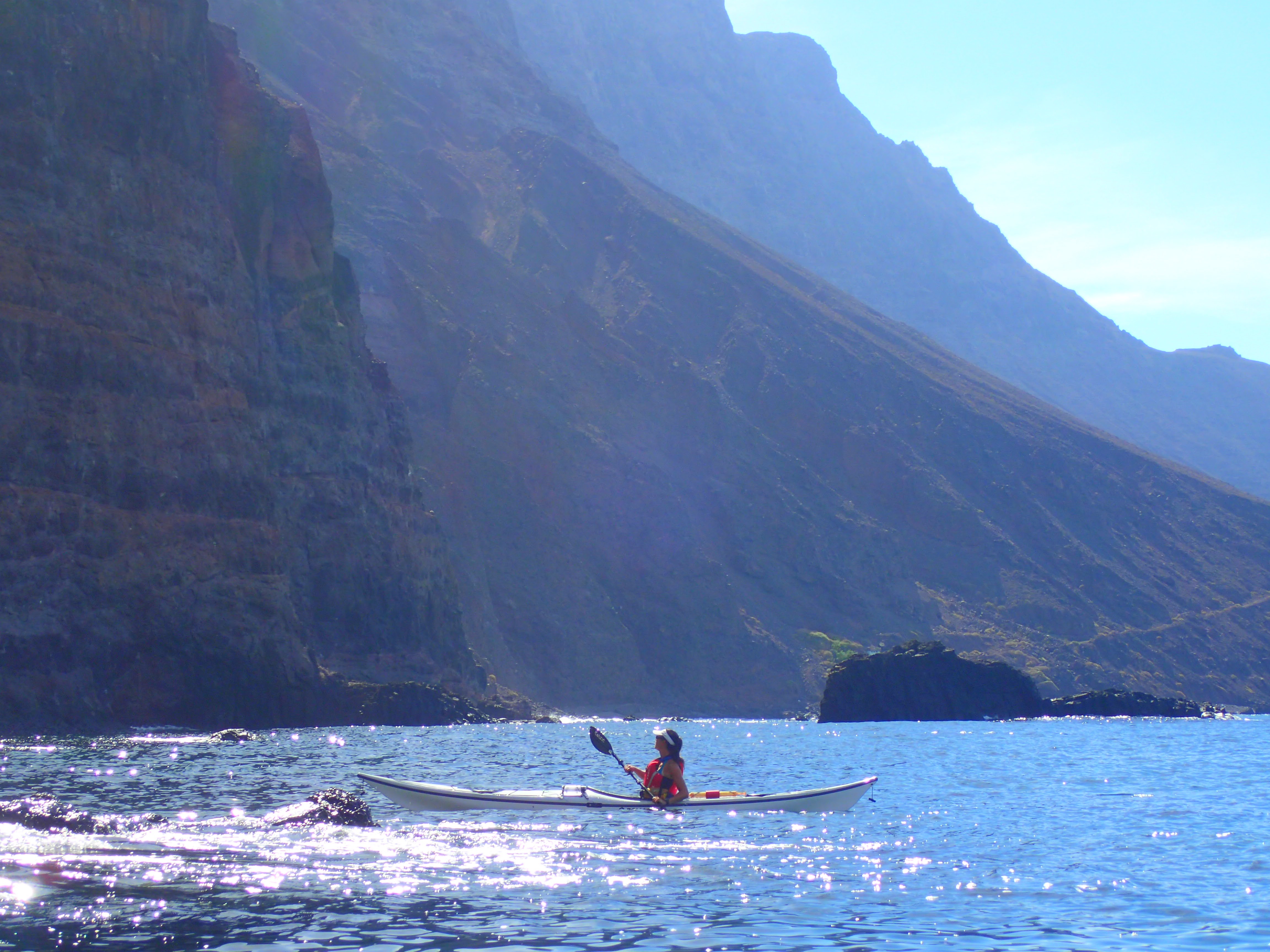The North and Chinijo
 Island crossings, soaring cliffs and lava lagoons!
Island crossings, soaring cliffs and lava lagoons!
To the north of Lanzarote lie the islands of the Chinijo archipelago: La Graciosa, Montaña Clara, Roque del Oeste and Alegranza. We have several routes around the archipelago, but the wind and swell conditions allow us to go most frequently to southern La Graciosa. This area gives us stunning views back across to the high cliffs of northern Lanzarote and the colour of the water here ranges from a pure blue to bright turquoise. When conditions allow, we can head up the little-known east coast of La Graciosa island with its caves and impressive sea arches and from there we can circumnavigate Montaña Clara island. From September to November we can see hundreds of Eleonora's falcons nesting here, having migrated from Madagascar to breed on these islands. Ospreys also breed and live year-round in this archipelago, as well as Egyptian vultures and even barn owls. Seabirds that arrive to breed here include Cory's shearwaters, little shearwaters, white-faced storm petrels, Madeiran storm petrels and Bulwer's petrels. This is a magical and wild place to paddle, with wonderful views in every direction.
 On Lanzarote island, the mighty Famara massif rises steeply out of the sea in the north west. The cliffs here soar up to 600 metres in height, making you feel very small as you paddle along their base. The delightful silence and solitude of this area, plus the awe-inspiring views combine to really stir the heart and revitalise the mind, leaving you reinvigorated after a long day's paddle here. There are lovely views from the base of the cliffs across to the islands of the Chinijo archipelago and on a clear day we can even see Alegranza behind the other islands. We can sometimes see resident ospreys in the cliffs and even tropicbirds which have been nesting on the island for quite a few years now!
On Lanzarote island, the mighty Famara massif rises steeply out of the sea in the north west. The cliffs here soar up to 600 metres in height, making you feel very small as you paddle along their base. The delightful silence and solitude of this area, plus the awe-inspiring views combine to really stir the heart and revitalise the mind, leaving you reinvigorated after a long day's paddle here. There are lovely views from the base of the cliffs across to the islands of the Chinijo archipelago and on a clear day we can even see Alegranza behind the other islands. We can sometimes see resident ospreys in the cliffs and even tropicbirds which have been nesting on the island for quite a few years now!

Next to Orzola, the town in the far north of Lanzarote, there are lagoons formed from sharp black lava rocks which contrast beautifully with the white sand in this area. Wintering birds like to visit these lagoons and at high tide, when the surface of the water is high enough that we can pass over the sharp lava rocks, we can paddle into the lagoons and get close to Eurasian spoonbills, little egrets, grey herons and whimbrels.